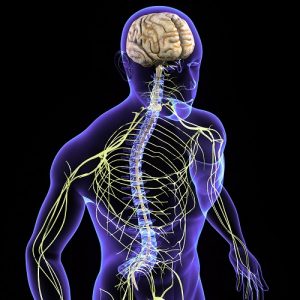
Written by McKenzie Jones
Rhizotomy is a slightly obstructive surgical procedure to eliminate agitation from a painful nerve. It destroys the various nerve fibers that convey pain waves to the brain. The nerve fibers can be killed by burning them with an electrical current or destroying them with a surgical device. Rhizotomy immediately alleviates pain and can last for many years until the nerve heals and resumes normal functioning. Rhizotomy is also known as neurotomy or ablation, killing or eliminating cells.
Illnesses Managed by a Rhizotomy
Rhizotomy is utilized in treating various forms of pain and unusual nerve activities like:
Spasticity- the unusual tightening of your muscles, is managed by rhizotomy. A selective dorsal rhizotomy is suitable for spasticity resulting from cerebral palsy. It leads to the enhancement of communication between the muscles and the spine.
- Joint pains such as the knee and the hip resulting from arthritis
- Neck and back pain caused by herniated discs, arthritis, spinal stenosis, and various degenerative spine illnesses. The procedure performed in such conditions is termed facet rhizotomy since it invades the spine’s facet joints.
- Various diseases attacking the peripheral nerves
- Trigeminal neuralgia, which is facial pain caused by trigeminal nerve irritability, is also managed by rhizotomy.
Recovery After Rhizotomy
Rhizotomy is a fast procedure that only takes a short period- however, you will take some time in the recovery room at the surgical center due to the anesthesia used. You will start functioning normally after this based on your response to anesthesia, such as going to work or driving only after two days. You may also experience swelling, pain, or bruising in the area of surgery.
Forms of Rhizotomy
Various forms of rhizotomy comprise killing the fibers in a nerve that convey pain signals. Based on where the nerve is situated, rhizomes can be carried out using local or general anesthesia and typically utilize fluoroscopy, x-ray, or image-controlled technique to ascertain precision.
Radiofrequency Rhizotomy
Radiofrequency rhizotomy is also referred to as ablation, which utilizes a radiofrequency current to destroy the fibers. It is usually applied in patients who experience recurrent pain and require help dealing with scar tissue.
Glycerol/glycerine Rhizotomy
Here, the surgeon utilizes a needle to put a small number of chemicals to the base of the impacted nerve. The chemical eliminates the nerve fibers within the nerve between 45 to 60 minutes.
Endoscopic Rhizotomy
In this type of rhizotomy, the surgeon utilizes a camera gadget known as an endoscope to determine the impacted nerves and destroy their fibers. The endoscope is positioned through a tiny opening through various tubes known as tubular retractor structures. It enables the surgeon to reach the nerve without interfering with the healthy tissues and organs. This process is also termed a directly visualized rhizotomy.
The Effectiveness of Rhizotomy
The success rate of rhizotomy is not 100%, just like the various procedures. A certain number of patients may slightly or not benefit from rhizotomy ultimately. Other individuals who experience pain alleviation from the process may come back after the regrowth of the nerve. However, such cases only affect a small number of patients. During your consultation with a rhizotomy specialist, it is significant to request all the details to decide your procedure. The majority of patients that experience rhizotomy get long-lasting pain alleviation.
Risks Associated With Rhizotomy
The side effects of rhizotomy are based on the type of nerve being worked on or the procedure being performed.
- Radiofrequency rhizotomy contains higher chances of causing numbness than the chemical procedure.
- The side effects of glycerol rhizotomy include: vomiting, infection, bleeding, nausea and a slight possibility of experiencing numbness and other anesthesia-related issues.
If you are experiencing back pain, you need to understand facet joints, which are underdiagnosed sources of pain. Most patients usually spend a lot of time managing the pain without success. It is due to the misdiagnosis of the leading cause of such pain. Rhizotomy, therefore, addresses topics such as controlling the pain resulting from such facet joint pain, which is effective. The first step in determining whether rhizotomy is suitable for you is steroid pain injections. If they succeed in minimizing the pain by at least 80% or higher, then rhizotomy is ideal for you. It relieves your pain, enabling you to finally feel better.
The American Institute of Health Care Professionals offers a full continuing education program leading to Certification as a Health Care Life Coach, you may preview our program by accessing this link.
